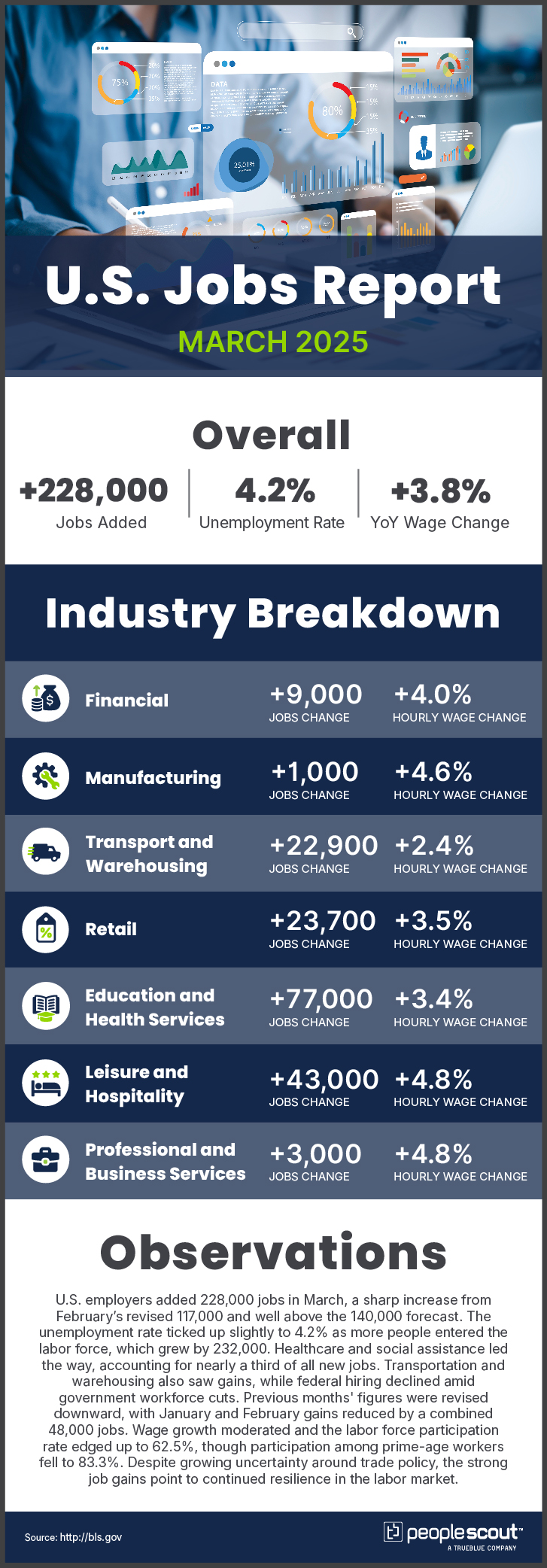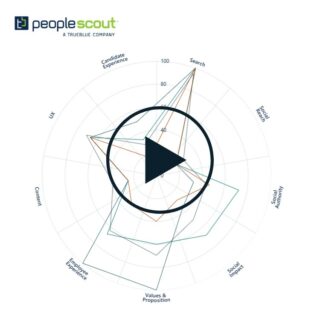U.S. employers added 228,000 jobs in March, a sharp increase from February’s revised 117,000 and well above the 140,000 forecast. The unemployment rate ticked up slightly to 4.2% as more people entered the labor force, which grew by 232,000. Healthcare and social assistance led the way, accounting for nearly a third of all new jobs. Transportation and warehousing also saw gains, while federal hiring declined amid government workforce cuts. Previous months’ figures were revised downward, with January and February gains reduced by a combined 48,000 jobs. Wage growth moderated and the labor force participation rate edged up to 62.5%, though participation among prime-age workers fell to 83.3%. Despite growing uncertainty around trade policy, the strong job gains point to continued resilience in the labor market.

The Numbers
- 228,000: U.S. employers added 228,000 jobs in March.
- 4.2%: The unemployment rate rose slightly to 4.2%.
- 3.8%: Wages rose 3.8% over the past year.
The Good
March brought a strong rebound in job growth, with U.S. employers adding 228,000 jobs—far exceeding expectations and marking a significant acceleration from February’s downwardly revised 117,000. Education and health services led the gains with 77,000 new jobs, continuing its dominant role in labor market expansion. Transportation and warehousing also contributed to job creation, as did professional and business services. The labor force grew by 232,000, a sign that more people are reentering the job market. Overall participation ticked up to 62.5%, and broader indicators of employment remain historically strong despite recent volatility.
The Bad
Despite the strong headline numbers, there are concerning signals beneath the surface. The unemployment rate edged up to 4.2% from 4.1%, and while this largely reflects more people entering the workforce, other indicators point to potential weakness. Wage growth showed signs of cooling, and participation among prime-age workers (25–54) declined to 83.3%, continuing a gradual slide from last year’s high of 83.9%. Prior months’ gains were revised downward, with January and February figures reduced by a combined 48,000 jobs. Federal hiring declined amid broader workforce reductions, though many of these cuts are not yet fully reflected in official data.
The Unknown
March’s report raises important questions about the labor market’s trajectory in the coming months. Businesses remain cautious as the impact of recent policy changes, particularly new trade policies, remains to be seen. The contrast between this month’s strong job gains and various indicators of underlying weakness creates a complex picture for policymakers. The Federal Reserve will likely monitor these mixed signals closely as it weighs the timing of potential rate adjustments. Additionally, the divergence between official payroll numbers and various sentiment surveys suggests potential volatility ahead.
Conclusion
The March 2025 jobs report presents a labor market at a potential inflection point—surprisingly strong job creation demonstrates remarkable resilience, but signs of underlying weakness cannot be ignored. The coming months will be crucial in determining whether March’s performance represents sustained momentum or a temporary bright spot before policy-driven changes take effect. As the second quarter begins, the labor market remains stable, but forward momentum will depend on how both employers and policymakers respond to growing headwinds.



